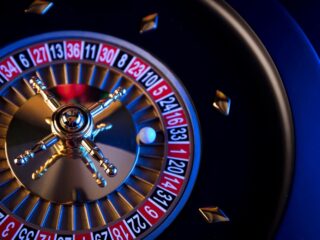
Trying to pull useful insights out of today’s mountains of gambling data—it’s, well, not as straightforward as some would hope. The online gambling world? Drowning in data points. But lumping sports betting and online slots together misses how differently they tick, analytically speaking. With sports, seasoned bettors tend to dive into piles of stats—old matches, lineup shake-ups, even weather quirks—to sniff out any edge, however slight.
Slots, on the other hand, pretty much stick you with whatever statistical bones the game makers toss you; no dusty record books required. There’s a steady creep of machine learning and complex analytics in both realms, although how much they shake things up—debateable. Digging into the classic measures like volatility, hit rate, or how odds twist and turn, people start to piece together a messier, but possibly richer, sense of risk and reward. Well, that’s the idea anyway.
Applying data-driven analysis to online slots sessions
Unlike sports, online slots analysis focuses on fixed probabilities and statistical expectations rather than evolving real-world variables. If you glance at the paperwork—RTP figures, usually somewhere between 92 and 98 percent perhaps, and a “volatility” label tossed in for flavor—slots appear easy to sum up. Don’t be fooled, though: the experience session to session is, for most, all over the place.
Sure, simulations se those published numbers to guess at winning streaks, droughts, or rare bonus spins over thousands, sometimes millions, of rounds. But outside the math, most players look at paytables, maybe scour for hints about hit rates, and try to map out their chances—that is, as much as anyone can when luck’s in the driver’s seat. Some folks swear by tracking things like free spins or the timing of jackpots, aiming to squeeze out a bit more value from their play, though each spin, thanks to rigorously tested random number generators, probably doesn’t care how clever you feel.
Making sense of historical and real-time data in sports betting
In sports betting, the analysis game often means shuffling together records from previous seasons, current injuries, team moods (whatever that really means), and live odds that just won’t stop shifting. Models—regression, Bayesian, the usual suspects—get thrown into the mix, pulling bits from all over: home vs away, weather blips, roster news, streaks long enough to raise eyebrows.
Responsible Gambling mentions that spreading your view across years, not just last week’s drama, can help temper some of those hunches people chase. The tricky bit? Model-based estimates run headfirst into whatever prices the bookmakers post, searching for a rare “value.” And these moments—blink and you’ll miss them—sometimes pop up in live betting, where in-play analytics might scrape a fraction of an advantage for those who are quick (or lucky) enough. It’s a frantic, imperfect process, always one roster change or one swingy minute from feeling obsolete.
AI, monitoring, and operator strategies in betting markets
Big data tech—it’s reshaping both sports betting and slot oversight in ways that are maybe subtle, maybe seismic (depends who you ask). Automated data feeds and new-generation machine learning programs chew through sports stats and slot machine logs, refreshing probabilities and rebalancing odds like clockwork, or maybe more like a random tide.
World-Lotteries and others have pointed out how these tools, aside from setting lines minute to minute, also watch for the weird stuff—betting patterns that trigger alarm bells about fraud or slip-ups in the markets themselves.
In the slot arena, similar eyes-on-the-data spot bonus hunting or anything that falls outside “normal” play. Thing is, randomness—bad beats in sports, sudden jackpot surges in slots—keeps slipping away from even the fanciest models. There’s a limit, and everyone in the business knows it; edging up the accuracy bit by bit is about as much as can realistically be expected.
Balancing analytics and risk management for sustainable play
Even the sharpest analysis won’t erase luck’s shadow. Managing risk, then—not exactly thrilling, but it’s the non-negotiable core for those looking to stick around. Most sports advice you’ll find leans towards a kind of cautious professionalism: don’t bet big, maybe cap it at a percent or two per play, and yes, that matches up with tools like the Kelly Criterion (but the math isn’t magic). Slot players, meanwhile, might be told that, reshuffling bets or chasing a system is mostly just superstition—better to pick higher RTP titles, keep play sessions tight, and accept the numbers won’t bend.

A running log of every wager or spin? Some say it’s the closest thing to a reality check. DeucesCracked and similar resources suggest blending data with disciplined stop points, plus regular reviews, gets you closest to “stable.” Operators themselves, of course, add layers of tracking and compliance to smooth out bumps—required almost everywhere worth playing.
Staying in control while using data to inform gambling
Crunching numbers, simulating outcomes, even building out a prediction model or two—it can all make betting more interesting, sometimes a touch sharper. Still, it’s worth repeating: luck rules here, not spreadsheets. Real responsibility starts before you let excitement take over; set those boundaries, maintain some distance from the results, and maybe most importantly, be ready to accept losing streaks as part of the deal.
Budgeting, tracking your time, recognizing emotional swings—these habits, not some magical formula, are what all the responsible gambling campaigns actually push. Data should nudge decisions, not dictate them. Maybe that sounds a bit low-key, but staying grounded means the game remains fun, now and (hopefully) later.






